#this has been confirmed by all the doctors and scientists ive spoken to
Explore tagged Tumblr posts
Text
people on tumblr will literally post things like “you have to eat vegetables and expand your palate i dont care if you are a picky eater because of autism (if i can overcome it you can too)” and everybody will reblog it being like “yes this is true for everybody no matter what” and think its okay. like sorry but that wont work for everyone and there is no one size fits all and some people will never be able to eat these things no matter how hard they try. im only allowed by my doctors to eat recreationally and not for nutrition, because my ARFID is so severe that i get my nutrition solely from a specially made formula drink. your suggestions of “try vegetables roasted!” or “try them in soup!” and assurances of “i did it, you can too!” don’t work for those of us with more severe mental illnesses and disabilities. stop tying a person’s worth to their diet and stop assuming everybody has the ability to do what you can.
#seb speaks#autism#arfid#disability#i am TIRED.#for me#it’s not just sensory issues it’s a subconscious response#that reads unfamiliar foods as poisonous#this has been confirmed by all the doctors and scientists ive spoken to#actuallyautistic#i cannot have it blended to where i cant taste or feel it because even the thought#of those foods elicits panic attacks#because again. my brain reads them as poisonous. whether i want it to or not#you may say ‘this is sooo unhealthy tho’#and yes! it is! because i’m mentally ill and disabled and i will never be healthy in this department#for as long as i live#i have done 3 rounds of feeding therapy and 1 support group#and countless visits to doctors and specialists and scientists#and they have all confirmed i will not get better#so the best i can do is to drink the formula and eat my safe foods. it’s the only way i’m physically able to live#and it’s why im not dying in a hospital bed from malnutrition anymore
1K notes
·
View notes
Photo
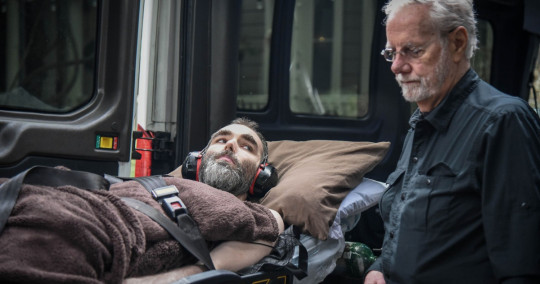
A geneticist’s biggest challenge: Curing his own son
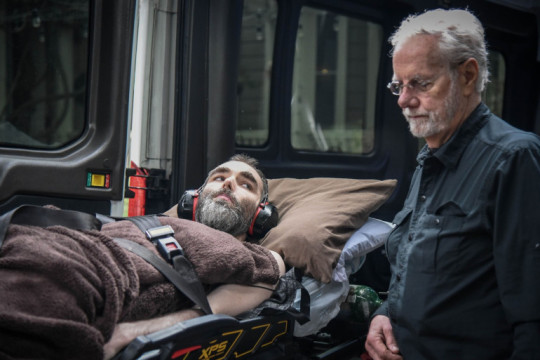
Palo Alto, California – Whitney Dafoe’s day begins at 2:30pm. His father, Ron Davis, peeks through the keyhole into the 37-year-old’s room. Is he awake?
ABSOLUTELY NO ENTRY is scrawled in red on a handmade sign pinned to the door below a picture of the Dalai Lama. Davis has rushed home from Stanford University in Palo Alto, California, to take the afternoon shift. When Whitney raises his left hand, fingers clenched to a fist, that’s Davis’s cue. Whitney is ready for his dad to change his diapers, put ice on his aching belly, and refill the IV-drip.
Davis’s shift ends at 6pm when his wife, Janet Dafoe, takes over. Dafoe, a child psychologist, carefully attaches a bag filled with liquid nutrients to her son’s j-tube because he cannot digest solid food. She will also take the night shift, so her 79-year-old husband can return to Stanford to work on the task that’s been governing his life for years: finding a cure for his son.
Whitney was diagnosed in 2010 with myalgic encephalomyelitis, or chronic fatigue syndrome (ME/CFS), a complex illness that leads to debilitating exhaustion, brain fog, insomnia and neurocognitive impairments. Any physical or mental effort aggravates the fatigue. He has been mostly bedridden for the last 10 years and has not spoken a word since Christmas 2014. He only communicates via pantomime or by typing short messages into his tablet. In one of his texts several years ago, Whitney typed, “Chronic fatigue sounds too banal. I call it total body shutdown.” He added an apology to his parents: “I am sorry I’m ruining your golden years.”
At about 190cm (6-foot-3), Whitney weighs a little over 45kg (100lbs). His head is shaved, his figure emaciated. Filmmaker Jennifer Brea (Unrest), a fellow ME/CFS patient, compares the illness to “a broken battery” that can only charge to five percent. Nobody has been able to identify a single cause. There are no standard diagnostic tests and no cures, doctors can only rule out other illnesses such as multiple sclerosis (MS) or cancer.
The National Academy of Sciences estimates that up to 2.5 million Americans suffer from ME/CFS, and an estimated 84 to 91 percent of people with ME/CFS are not diagnosed. The World Health Organization lists ME/CFS as a neurological illness, but Davis is convinced he’s confronting an autoimmune disorder, not unlike MS. Like many autoimmune disorders, it disproportionately affects women. His research became especially urgent after Dr Anthony Fauci, the top infectious disease expert in the US, warned that the novel coronavirus could cause ME/CFS.
“CFS is probably the last major illness we need to figure out,” says Davis, who speaks with a voice so tender everyone around him immediately lapses into silence so they can understand his words. “I feel the tremendous weight to find a solution.”
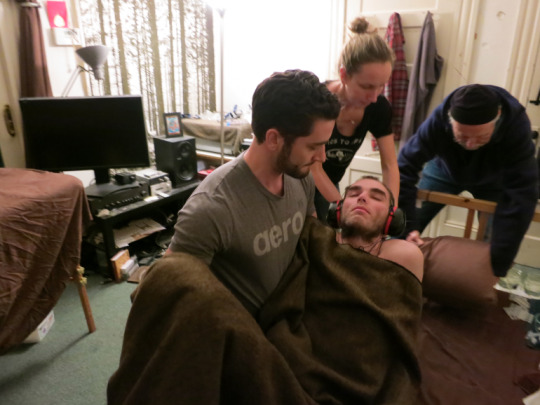
Whitney Dafoe, 37, who has chronic fatigue syndrome, weighs little more than 45kg
A problem solver
Davis, the director of the Stanford Genome Technology Center, has solved complex puzzles before. It’s something he has enjoyed since childhood when he would build model rockets, persevering despite being told by teachers that he would never amount to much because of his dyslexia.
He later developed one of the first methods for mapping DNA in 1967. In his 50-year career as a biochemist and geneticist, he has also worked with Nobel laureate James Watson at Harvard, created the first image of the pairing of two genomes, and made crucial contributions to the Human Genome Project.
I’ve always found tremendous joy in solving problems that others deem unsolvable.
Ron Davis
In 2013, Atlantic magazine counted him as one of “today’s greatest inventors.”
“I’ve always found tremendous joy in solving problems that others deem unsolvable,” he says in the foyer of his house, but the joy drains from his face when he stops at his son’s door. “My greatest hope is that we find the cause.”

Whitney, before he became ill with ME/CFS
‘When Ron calls, we come’
Whitney was an award-winning photographer with a keen, meditative eye. The lanky, curly-headed adventurer explored all 50 states and nearly all continents with his camera. He lived with a shaman in Ecuador, discovered the Himalayas on the back of his motorcycle, and helped build a nunnery in India. Like many CFS-patients, his breakdown started with an infection: In 2007, he went to a clinic in India with a fever and bloody diarrhoea. When the doctors there could not help him, he booked the next flight home to California.
But despite innumerable doctor visits, he kept getting weaker. In 2009, he took photos of then-President Barack Obama’s inauguration but already could not work full days anymore. He tried keeping up with wedding photo assignments, but it would take him an entire week to recover.
“First he couldn’t carry his shopping bags anymore, then he became too weak to cook, so in May 2011, he moved back in with us because he didn’t have the energy anymore for the simplest everyday things,” Janet Dafoe recalls. “At first, we couldn’t understand why he was always so tired. Then, we thought, OK, who are the specialists? At which clinic can we get help? We tried absolutely everything the doctors recommended.” She runs down a long list of medications, antidepressants, cancer remedies, MS supplements. “Until we realised: Nobody knows how he can get healthy again.”
That is when Davis came to a decision: “I have to do it.”
Whitney’s state is comparable to an AIDS patient about a week before his death. And that has been the case for the last six years.
Ron Davis
The words of the doctor who finally diagnosed his son with ME/CFS burned themselves into his memory: “The good news is, he won’t die from it. The bad news is, he won’t die from it.” But the truth is that any further infection, for instance from his feeding tube, could be the end.
Davis understands his race for a cure as a race against the death of his son. “Whitney’s state is comparable to an AIDS patient about a week before his death. And that has been the case for the last six years,” Davis says. At one point, Whitney spelled D Y I N G with scrabble tiles.
In 2013, Davis founded the Stanford Chronic Fatigue Syndrome Research Center (now called ME/CFS Collaborative Research Center). In his labs, centrifuges churn with the blood of dozens of severe ME patients, including his son. A geneticist colleague is sequencing their genes as a favour.
“There are still doctors who send these patients to a psychiatrist,” Davis laments. “If a general practitioner analyses Whitney’s blood, they get near-normal results. Therefore doctors think the illness is in their head.” But when he explored further, Davis detected anomalies. After more than 9,000 experiments, Davis has proven that Whitney’s blood is thicker and stickier. When he exposes the blood of healthy people to a stressor such as salt, it will soon revert back to normal, whereas the blood conductivity of CFS patients collapses. Davis has developed four diagnostic tools he is currently testing and believes he will soon be able to announce a breakthrough in confirming biomarkers.

Ron Davis, one of the world’s leading geneticists, is focused on finding a cure for his son
But Davis’s deeply personal fight for his son’s health is also a battle for the recognition of this illness. The National Institutes of Health spent only about $15m in 2019 on ME/CFS research, which affects up to 2.5 million Americans. It spent about $111m on MS research, which affects about one million people.
Luminaries from all over the world have joined Davis’s research and flew in for the last pre-pandemic CFS Symposium at Stanford in September 2019: Robert Phair, a former Johns Hopkins School of Medicine professor, has seen interrupted metabolism in patients; top surgeon Ron Tompkins established a CFS research collaboration at Harvard University; Maureen Hanson, professor of molecular biology at Cornell University who was motivated to join the efforts by a family member with CFS, has focused her research on the microbiome of patients’ gut and blood; neuroscientist Jonas Bergquist who travelled from Uppsala University, in Sweden, where he started a research centre on ME/CFS.
Stanford geneticist Mike Snyder summed up what many of them think: “When Ron calls, we come.” They all acknowledge his brilliant mind and work ethic, and complain about the lack of funding to study this complex disease.
With Davis’s help, the Open Medicine Foundation, which leads the largest non-profit effort to diagnose, treat and prevent ME/CFS and related chronic, complex diseases, raised more than $18m in 2019 and was on track to raise another $20m in 2020. Davis, who is the director of OMF’s scientific advisory board, has such a stellar reputation among scientists that he was able to convince numerous renowned researchers at Ivy League universities to contribute to his work, including Nobel Laureates Paul Berg and Mario Capecchi.
They have made progress: Neurologists found inflammatory changes in the brain; immunologists suspect an error response in the immune system; and geneticists point to a genetic marker for CFS that up to three-quarters of people may have. “It’s like looking at an elephant,” Davis jokes. “One is checking out the trunk, another the legs, and a third the ears. Everybody finds something in their area.”
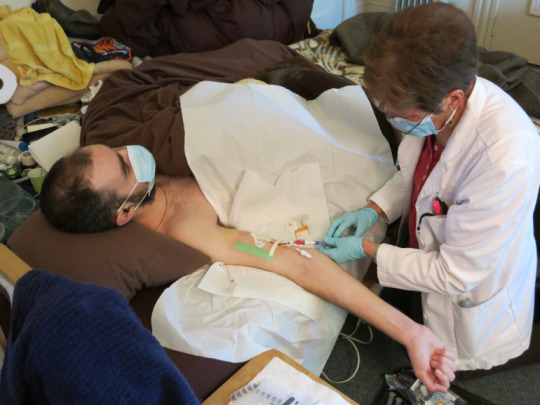
Whitney has not said a word since Christmas, 2014
ME/CFS and COVID-19
Davis’s research became even more urgent and important after Dr Fauci warned that some COVID survivors showed symptoms in line with those of ME/CFS. “This is a phenomenon that is really quite real and quite extensive,” Fauci said at the federal government’s first conference on “COVID long haulers” in early December, calling it “a significant public health issue”.
According to Fauci, “a considerable number” of COVID survivors struggle with extreme exhaustion, memory lapses, and cognitive difficulties many months after they have been officially cleared as recovered.
Davis is part of a high-level interagency work and research group (PDF) looking at the long-term consequences of COVID with the Centers for Disease Control and Prevention (CDC), National Institutes of Health, the Veterans Administration, and the Department of Defense.
This could be a turning point to figuring out how ME/CFS gets triggered and how to stop it before it starts.
Whitney Dafoe
He launched the first study into long-term molecular changes in COVID patients and he is years ahead in his research on why some patients cannot recover easily after a severe viral infection.
“This could be a turning point to figuring out how ME/CFS gets triggered and how to stop it before it starts,” Whitney typed in a text shared by his parents. “They are taking blood from coronavirus patients and monitoring their progress so they can see, in real-time, the transition from coronavirus to ME/CFS.”
‘Superman’
In the early years, Whitney was still able to work with a physiotherapist. “Now he can’t tolerate strangers in the room. Everything is too much.” Janet Dafoe sighs. She reduced her therapy hours and her husband reorganised his institute so they can care for Whitney around the clock. Sometimes, a nurse takes over the night shift, but the family cannot afford constant care. “Many ME/CFS-patients have a warped night-day rhythm,” Janet Dafoe explains why she often stays with her son until 5am. They have tried in vain to find a different rhythm. “Whitney hardly sleeps more than two hours a night, and nobody knows why.”
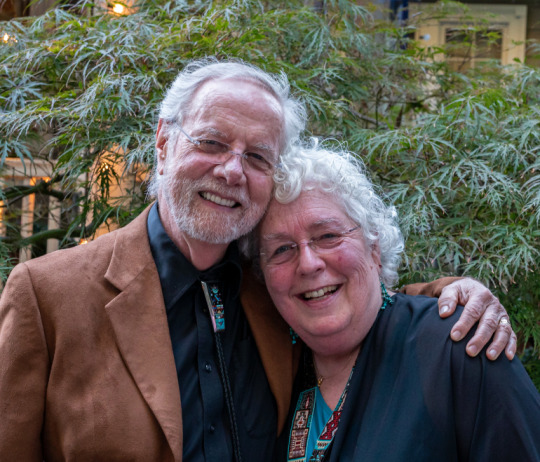
Ron Davis and Janet Dafoe
Just like the virus took over their son’s body, it has also brought his parents’ lives to a standstill. “Our life is stuck in a holding pattern,” Janet Dafoe acknowledges. “Doing my PhD was hard. I conquered mountains, that was hard. But living with my son’s illness is a thousand times harder. Our entire world has been eaten up by a chronic disease.”
Last July, Davis and Dafoe celebrated their 50th wedding anniversary. They met at the California Institute of Technology (Caltech) when she was a budding child psychologist, he a geneticist who had already garnered the first of his 30 patents. They immediately connected over their shared interests: hiking, nature, Indigenous American wisdom. They used to enjoy mountain tours, trips to the Sierra mountain range, and visits with Native American shamans. But their travel together has all but ceased as at least one of them always stays close to their son. They still have a traditional sweat lodge in their lush garden, Janet Dafoe’s greatest pride.
“Because we can’t travel anymore, I take care of the garden, so we at least have a nice place here,” Janet Dafoe says, her grey curls framing her face. Tibetan prayer flags flutter above the pillars of their elegant single-family home in Professorville in the heart of Palo Alto, a reminder of Whitney’s Buddhist faith.
This is a devastating, really serious disease that affects many body systems. It will completely knock you out, it will ruin your life and the lives of people who take care of you. It can affect anyone if they just get the wrong virus or the wrong environmental stress.
Janet Dafoe
In the hallway leading to Whitney’s room, Whitney and his younger sister, Ashley Haugen, smile from framed photos, taken in happier times, their toddler selves dancing hand-in-hand. Ballet used to be Ashley’s passion; now she is an event manager and new mother.
In 2011, after Whitney first fell ill, his sister took care of him for a full year. But she burned out. “He was my best friend,” she says. “It is hard to find someone who knows you as well as your brother.”
Her parents invited friends and colleagues to their Palo Alto home on this pre-pandemic afternoon the day after the conference, including a dozen patients with milder ME who are strong enough to leave the house. For 20 years, Janet Dafoe worked full-time at the Children’s Health Council in Palo Alto, then the last 15 years at the Morrissey Compton Educational Center in Redwood City, mainly counselling children with Aspergers and autism. Instead of taking care of her own psychology patients, she now spends many hours a day comforting other ME/CFS patients. “I try to show them that they are not alone. I am busy every day to prevent suicides,” the mild-mannered Janet Dafoe says, then her tone changes and she speaks of increasing despair.

Whitney and Ashley when they were children
“This is a devastating, really serious disease that affects many body systems. It will completely knock you out, it will ruin your life and the lives of people who take care of you. It can affect anyone if they just get the wrong virus or the wrong environmental stress,” she adds. “They should all be up in arms that the research isn’t funded better so we can figure this out! Instead, some doctors are still telling patients to simply man up or exercise. They are basically committing malpractice. It’s absolutely mind-blowing.”
Of course, many patients are depressed and anxious, she says, “because so much has been taken away from them. But that doesn’t mean the illness is in their head. You would be depressed, too, if you couldn’t do most of the things you used to do, and nobody knows how you can be helped.”
She tries to retrieve her sense of humour, recounting one of her last conversations with her son several years ago. He was worried he would not be able to find a wife. “’They’ll all be taken by the time I’m recovered,’” Janet Dafoe smiles as she remembers his words.
“I told him finding a girlfriend for him will be the easiest problem to solve.”
Everything can change in a moment. You never know what will happen in the future. Never stop fighting. I'm fighting with you. If you feel like giving up, give it to me. I will carry it for you.
Whitney Dafoe
This year, Whitney’s energy has improved a little with experimental medication. For the first time in years, he can type longer texts into his tablet, opening a window into his isolated inner world. When Dafoe asked her son if he had a message for other CFS patients, Whitney closed his eyes, focused, and wrote a few lines: “Everything can change in a moment. You never know what will happen in the future. Never stop fighting. I’m fighting with you. If you feel like giving up, give it to me. I will carry it for you.”
Janet Dafoe had the lines printed on posters, with a picture of Whitney’s raised left fist, photographed through the keyhole of his room.
It’s a fight his parents have vowed to never give up either. Davis’s book with award-winning journalist Tracie White, The Puzzle Solver: A Scientist’s Desperate Quest to Cure the Illness that Stole His Son, hits bookshelves this month. It paints an intimate portrait of Whitney’s journey to diagnosis and his father’s fight to find a cure.
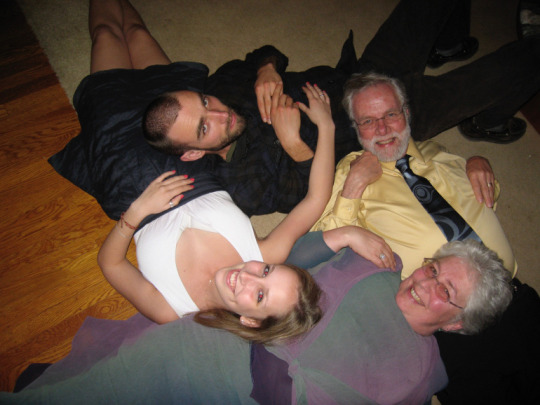
Whitney, with his parents and sister, who have taken care of him at different times since he fell ill in 2010
Sitting in the garden, Davis keeps checking his mobile phone until it tells him it is time for the next feeding. He promptly gets up to mix a second helping of nutrient powder for his son.
When Davis returns from feeding his son, his face is crumpled by exhaustion. “I’ve got to sit down,” he says. Both father and son have Ehlers-Danlos syndrome, which causes joint pain and fatigue. Davis started suffering from rheumatic fever as a one-year-old toddler, was often bedridden for weeks as a child; he lives with chronic pain every day. “I’m used to pain,” he says flatly. “You just rewire your brain to ignore it.”
It was precisely his childhood experience with medicine that ignited his passion for science. When a doctor gave him penicillin for the first time, instantly erasing his fever, the child thought medicine was a miracle and vowed to study it from then on. “His whole life prepared him for the task of saving his son,” Janet Dafoe comments. “Whitney truly believes dad is superman.”
The book The Puzzle Solver, co-written by Ron Davis and Stanford science writer Tracie White, will be published January 5, 2021, by Hachette.
#technology Read full article: https://expatimes.com/?p=16320&feed_id=26392 #coronaviruspandemic #features #health #scienceandtechnology #unitedstates #usampcanada
0 notes
Text
Vitamin Drip Therapy: The Science Behind This Celebrity Beauty Secret
Vitamin drip therapy. Celebrities treat themselves to it before hitting the red carpet. Fitness enthusiasts use it to increase the intensity of their workouts. Plastic surgeons prescribe it to reduce pain and speed up healing post-surgery. And best of all, science shows it works!
Although it’s been around since the mid 1950’s, vitamin drip therapy isn’t very well known to the general public. It’s not much of a secret to Hollywood’s top celebrities, though – Simon Cowell, Cindy Crawford, Geri Halliwell, Madonna, Rihanna, Kim Kardashian, and Kate Upton have all spoken highly of the procedure.
Imagine a spa salon filled with people reclining in couches or lounge chairs. Now instead of the massage oils, foot baths, or nail dryers you’d expect to find, imagine intravenous drips, hanging from the patrons’ arms. That’s what vitamin therapy is like.

It may sound like the stuff of science fiction, but the procedure’s proponents swear by its age-defying properties: restore the skin’s youthful glow, stimulate boundless energy, prevent illness, and even ward off diseases like cancer… it seems like there’s nothing these intravenous concoctions can’t do.
Since this all sounds a little too good to be true, I spoke with an expert in the field to find out more: Dr. Kristine Blanche, leader of Integrative Healthcare at Aristocrat Plastic Surgery in New York and Long Island, has been delivering vitamin drips for more than a decade.
And to separate the hype from the hard facts, I also conducted a brief review of scientific literature on the topic. Here’s what I learned.
How does vitamin drip therapy work?
“Most medications given intravenously – IV antibiotics, for example – are more powerful. The same is true for intravenous vitamins,” says Dr. Blanche. “The benefits are many, though one of the major benefits is that the vitamins or minerals bypass the gut and go right where they need to be – directly into the bloodstream.
“For any number of reasons, many people have digestive issues so it’s hard for them to absorb nutrients from food and/or nutritional supplements,” Dr. Blanche continues, “With IV nutrients, we get to place the nutrients into the bloodstream directly, ‘filling the tank’ to help the body heal, which has great benefits for the immune system, adrenal glands and so forth.”
What type of nutrients can be administered using a vitamin drip?
Dr. Blanche informs that nutrients can include:
Vitamin C – to boost the immune system and fight the flu and viruses.
B vitamins – to help with attention, focus and energy.
Magnesium – to relax and support every cell of the body, and as a great supplement for athletic performance and recovery.
Zinc and selenium – to help support the thyroid, immune system and wound healing.
Amino acids – for enhanced brain health.
Glutathione – for anti-aging, anti-cancer, and even as a treatment and preventative nutrient for Parkinson’s disease.
The vitamin drip cocktail menu
Most vitamin drip providers offer a wide array of options to their clients. Depending on your objectives, you can browse the menu and choose your vitamin ‘cocktail’ of choice. At some outlets, you can even have a special custom-made cocktail put together.
For instance, Aristocrat Plastic Surgery offers “The Myers Cocktail” – a combination of magnesium, vitamin C and B vitamins used to treat a wide range of clinical conditions.
New York’s IV Doc is a high-end mobile service that caters to clients in the comfort of their home, hotel, or private office. For $399, their Beautifying Hydration Treatment promises to make you look and feel your best prior to a special event or night out. The special concoction includes:
Vitamin B1 (Thiamine)
Vitamin B2 (Riboflavin)
Vitamin B3 (Niacin)
Vitamin B5 (Pantothenic Acid)
Vitamin B6 (Pyridoxine)
Vitamin B12 (Cobalamin)
Multi-Vitamin Cocktail (“Banana Bag”)
Similarly, Vitasquad in Miami offers a mixed infusion LiquiBeauty package:
Saline
Glutathione
Magnesium chloride
Vitamin C
Trace elements – chromium, zinc, selenium, copper and manganese
B complex vitamins – B1, B2, B3, B5, B6
Methylcobalamin – B12
Is the vitamin drip an effective anti aging treatment?
“Yes, it’s my personal favorite for anti-aging,” says Dr. Blanche. “The antioxidant effect of vitamin C and glutathione is very powerful, as it protects against free radicals and scavenges them to prevent cell damage. I tell my patients to think of oxidation from free radicals as a kind of rusting. Antioxidants such as vitamin C prevent the rust, which makes them a potent anti-aging formula. Glutathione is the most powerful anti-aging treatment we use, along with the incredible benefits it provides for the brain!”
Kim Kardashian and Kate Upton have used IV Vitamin drip treatments.
Many Hollywood celebrities use vitamin drips to give their beauty regimen an additional edge. Kim Kardashian and Kate Upton have called upon New York’s IV Doc’s dedicated in-home services for a quick, 30-minute boost before hitting the red carpet.
Is there any pain to be expected with a vitamin drip?
If the thought of needles makes your stomach squirm, vitamin drip therapy might not be the best option for you. Still, the procedure is quite painless. “The only pain you’ll feel is during the few seconds it takes to insert the needle,” says Dr. Blanche. “We use IV catheters so the patient feels more comfortable.”
Once the catheter is introduced into the vein using a needle, the needle is removed, leaving the end of the plastic catheter tube in the arm, which is then taped into place. “People like that the needle is removed for the treatment because it allows them to bend their arm or even go to the bathroom,” adds Dr. Blanche.
How long does the treatment take?
Depending on the treatment selected, it can take anywhere from 45 minutes to an hour and a half.
What does the average vitamin drip cost?
The cost of a drip at Aristocrat Plastic Surgery ranges from $250 to $450, depending on the contents of the drip.
New York’s IV Doc’s Beautifying Hydration Treatment will set you back $399 for a 30 minute infusion of up to 1 liter of IV fluid.
Miami’s Vitasquad LiquiBeauty infusion costs $95 per 500mL for the traditional treatment, or $175 for Liquid Life, their ultimate IV infusion.
Is there any science to show vitamin therapy really works?
As suggested earlier, vitamin drips aren’t new. They were pioneered back in the mid 1950’s by Dr. John Myers, a medical doctor who discovered that they were an effective treatment for a wide variety of conditions such as asthma attacks, acute migraines, fatigue (including chronic fatigue syndrome), fibromyalgia, acute muscle spasm, upper respiratory tract infections, chronic sinusitis, and seasonal allergic rhinitis. Improvements were also seen in patients with congestive heart failure, thyroid problems, and more.
But even though Myers had almost two decades of clinical experience, with many positive reports from patients, only a limited amount of published research is available. Here is a short synopsis of some of the scientific evidence I found.
Vitamin C drip benefits
Vitamin C (ascorbic acid) is well known for its powerful antioxidant properties, which exhibit a range of health benefits across many diseases. It comes as no surprise that intravenous vitamin C has received the most research attention, particularly for its potential as a cancer treatment.
When cancer develops, there is a direct imbalance between free radicals and antioxidants in the body. Fighting this through the intravenous administration of vitamins is more effective than oral solutions, which often fail to sufficiently increase the presence of vitamins in the blood. This has been demonstrated in a number of scientific papers.
Some research even shows that vitamin C infusions increase antioxidants and help fight off cancer cells in some patients. However, other studies show no such correlation. Scientists have not yet reached a definitive conclusion on this topic.
In terms of side effects, one thing scientists tend to agree upon is that vitamin C drip therapy is safe and shows promise for improving outcomes for cancer patients. High-dose vitamin C has also shown to be effective in the treatment of viral infections, mitigating any long-term effects. It also has the ability to reduce blood pressure.
Intravenous magnesium benefits
Intravenous magnesium can play a major role in decreasing post-operative pain and reducing the need for medications, according to number of studies (a,b,c).
A 15 to 30 minute magnesium infusion given to adults with acute asthma has also been shown to reduce hospital admissions by 7%.
Since magnesium is a mineral used in over 300 enzymatic body functions, more research is required to determine how intravenous magnesium could benefit other conditions as well.
Intravenous glutathione
As suggested by Dr. Blanche, intravenous glutathione is an incredibly powerful antioxidant. Research has shown that it reduces oxidative stress and may aid in preventing the onset and progression of Parkinson���s disease.
Vitamin D drip
Most of the research on intravenous vitamin D has focused on hemodialysis patients, where it has been shown to reduce the rate of infection and death, and improve their quality of life.
Vitamin B drip
Intravenous vitamin B1 (thiamine) has been shown to improve outcomes for cardiac patients both pre- and post-surgery (a,b,c).
The Myers cocktail, which includes the range of B vitamins, has been shown to improve symptoms of fibromyalgia.
Intravenous vitamin B3 (niacin) has been shown to assist with weight loss by reducing belly fat storage.
Intravenous vitamin B12 (cobalamin/ methylcobalamin) is effective for patients with peripheral neuropathy.
Anti-aging
Unfortunately, there are no direct studies to confirm that vitamin drips have any anti-aging properties. However, research shows that antioxidant nutrients have the ability to minimize the effects of aging.
Since vitamin therapy does in fact increase the presence of nutrients in the blood more effectively than oral doses, it does arguably present real anti-aging benefits. After all, it has the potential to feed the body’s cells more efficiently, lowering the oxidative stress and free radicals that speed up aging.
Vitamin drips as a post surgery treatment
Aristocrat Plastic Surgery is just one of several plastic surgery facilities that now offer vitamin therapy to reduce pain and promote faster healing after post operatively.
“Our surgical patients see the best results when they are administered pre-op drips that boost vitamin C, zinc and selenium because it helps reduce risk of infection, and speeds up wound healing,” says Dr. Blanche. “After surgery, we recommend post-op drips because they help the body detoxify from the anesthesia and reduce recovery time.”
The article “ Vitamin Drip Therapy: The Science Behind This Celebrity Beauty Secret” was first seen on Drip IV
Boost your immune system with IV vitamin therapy at Dr. Amauri Wellness Centre located in the heart of Yorkville, Toronto.
0 notes